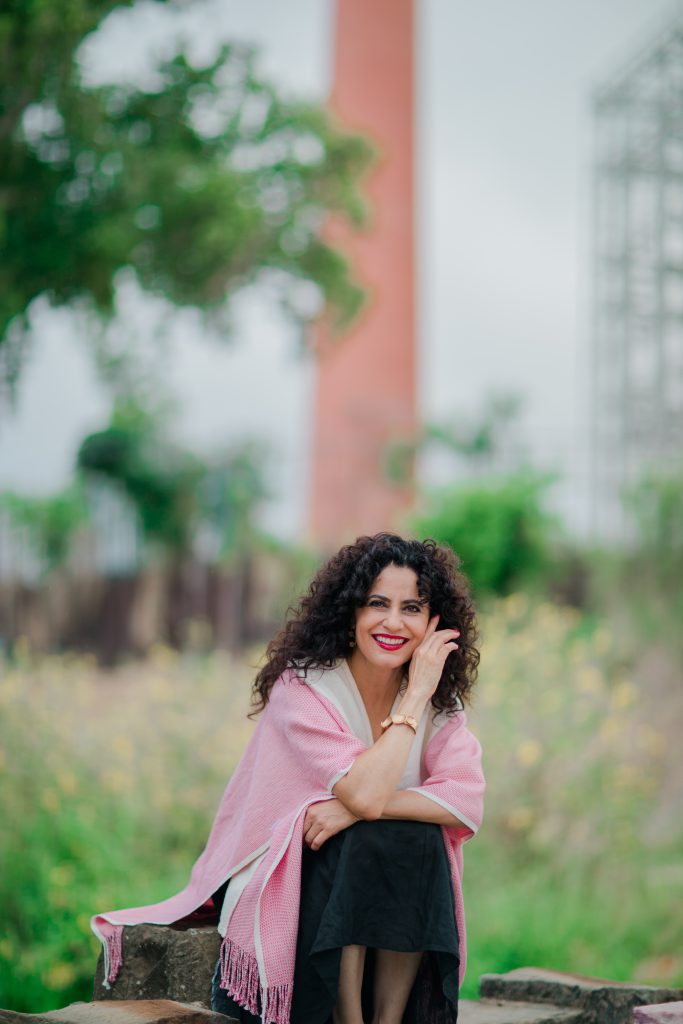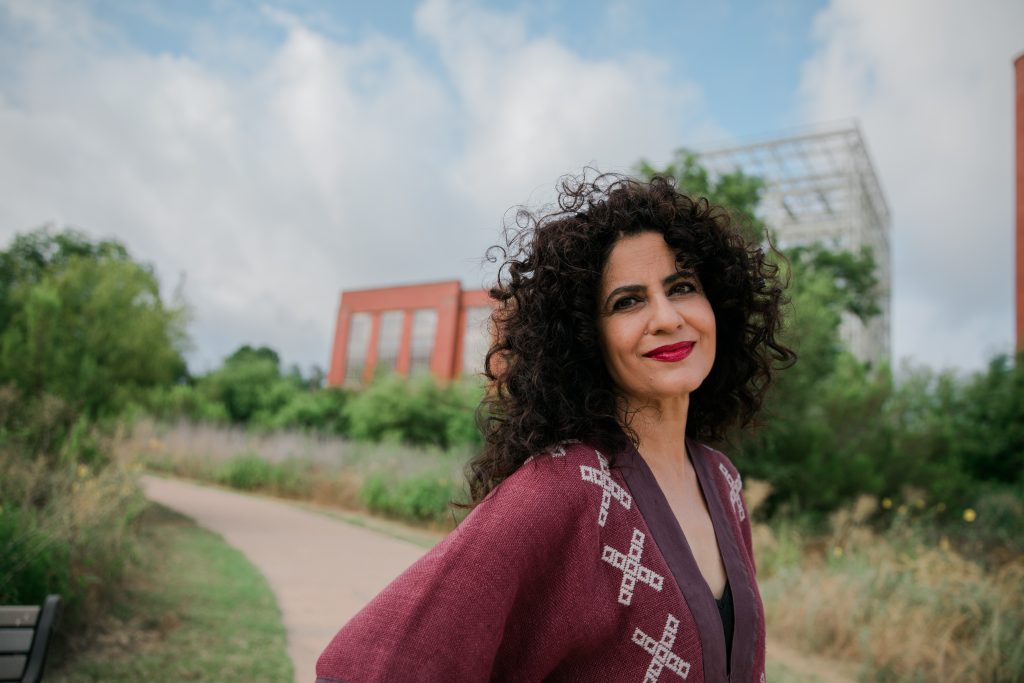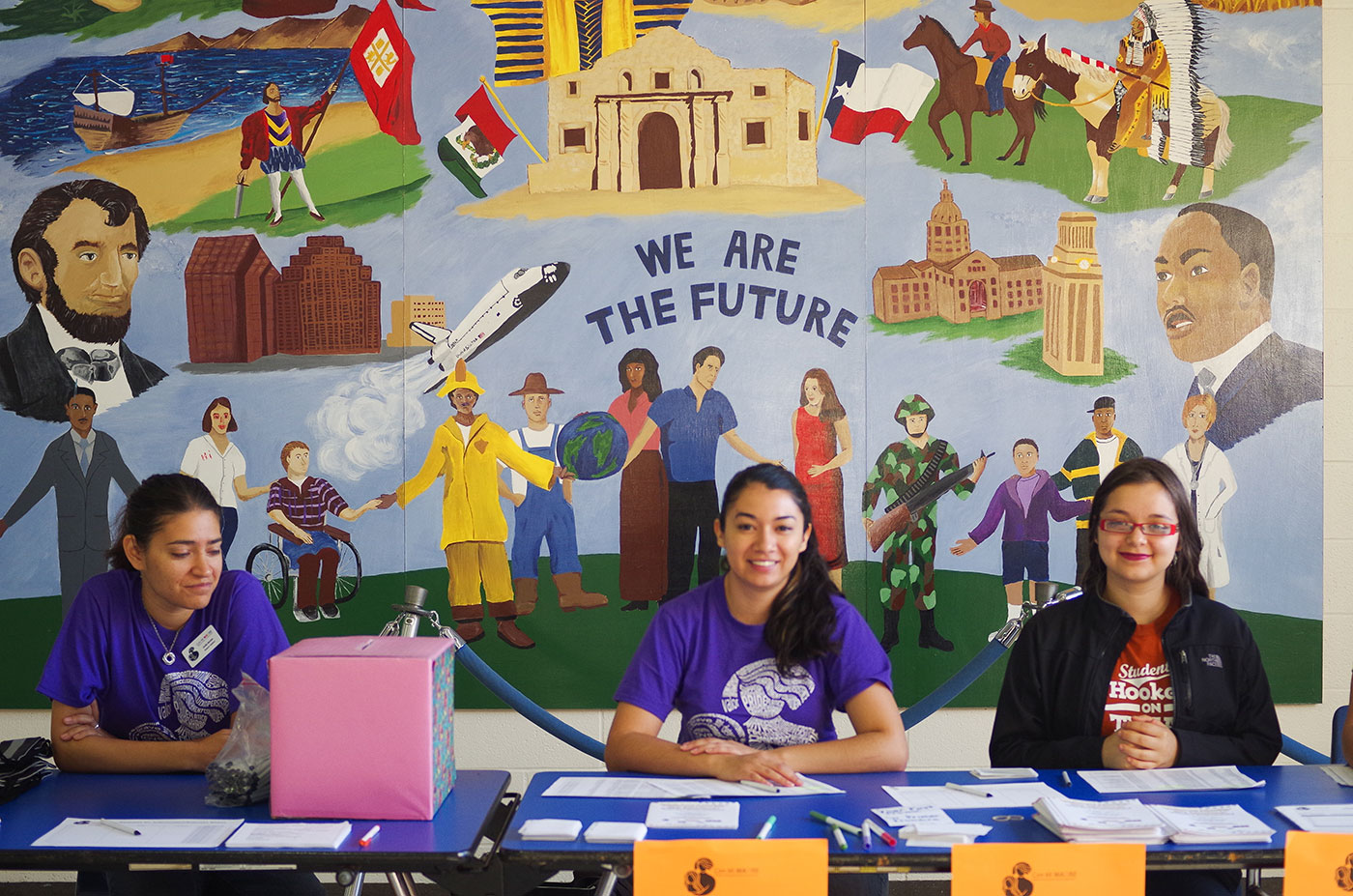MÓNICA DEL ARENAL |Restoring the Past and Preserving the Future

By: Lilia Davis
Photos by: Lucero Salinas
Mónica del Arenal is a Mexican architect from Pachuca, Hidalgo, Mexico, a woman who symbolizes culture in all its expanse. Her career is as broad as her curriculum vitae, which is about 35 pages long, a testament to her trailblazing career. Former Director of the Mexican Cultural Institute in San Antonio. She received the 2017 Visionary Award from the San Antonio International Chamber of Commerce, as a woman that will make her mark on the world.
The author of Architectural Guide of Guadalajara (Arquine 2016) and Guadalajara/Builders, Dandies and Cyclists (Albertina 2010), and of various recognized screen plays or productions of documentary films. This summer Mónica del Arenal begins a new chapter in her profession as a Consultant for the Public Arts and Culture of San Antonio. She discusses the celebration of the Tricentenario of San Antonio, the hispanic immigration and the influence of women on the history of San Antonio.
THE EDUCATED EYE
Mónica del Arenal has had extensive training in Restoration of Architectural Monuments, with studies at the Polytechnic University of Catalonia, Sustainable Strategies for Conservation, Management and Use at the University College London and the Built Heritage in the ICCROM of the city of Rome in participation with the International Center of Studies of Herculaneum.
In 2011 she obtained the Annual Award of the Benemérita Society of Geography and Statistics; and the national third place in the CEMEX Works Award, for the Identification Project of the Architectural and Urban Patrimony of the Metropolitan Zone of Guadalajara ‘La Ronda’.
Mónica del Arenal has lived in Seville, Spain and was part of Cruz and Ortiz Arquitectos in the restoration of the new Rijkmuseum Museum in Amsterdam. She has published and presented exhibitions in Italy, Spain, The United States, Canada, Chile and Mexico. She is fluent in Italian and English.
My House /Your Home and Mexican Hammocks
A few of years ago I went to the San Antonio Museum of Art and found something different: the project My House / Your Home, an installation with red hammocks in modern red steel structures, that captured the essence of Mexican tradition and brought it current in a novel way. The person behind this “hammocks” had merged the traditional with the modern, and had done so that it s memory lingered in my imagination all this time and I wondered Who had come up with such an idea, so intriguing, so brilliantly executed?
That question was eventually answered: the ingenious Mexican artists Cadena y Héctor Esrawe, as explained to me by the woman I am sitting across from, the architect that supervised the project, Mónica del Arenal, ex-director of the Mexican Cultural Institute in San Antonio (MCISA) in the Pearl Brewery Complex, an attractive, generous, intelligent and smartly dressed woman I have just met and with whom am drinking coffee. This being the Bakery Lorraine, of course, there is also a delicious piece of horchata cake with a subtle flavor of cinnamon placed upon our table.

Foto: Lucero Salinas © Encanto Rojo | Mónica del Arenal @ Confluence Park River Pavilion
MEXICO FOR ALL
What was your biggest challenge when you arrived at your position as Director of the Mexican Cultural Institute in San Antonio in 2016, what needed to be done?
When I arrived as a director I found myself faced with a very big challenge. We were about to lose the building where the Cultural Center is located, they wanted us to move out because the Center did not have enough vitality during the last years, enough visitors frankly.
The first thing that needed to be done was 1) to recover the rights to use the building by signing a lease contract that will not expire until 2021; 2) revitalize the center through events to bring strong connections with the community so that all residents and visitors in and to San Antonio, both Hispanic, Anglo-Saxon, Mexican-American, would come and visit us. And that we accomplished.
More than 60 projects
We carried out more than 60 projects: theater, dance, visual arts, literature, gastronomy, together with local institutions such as libraries, universities, galleries and museums, as well as with the International Relations Office and the Department of Art and Culture of San Antonio. Many people were key in the reactivation of the institute, such as Mike Casey, Ellen Riojas Clark and the Association of Mexican Entrepreneurs, first with Roberto Espinoza and then with Rubén Linder as presidents.
We did not want to continue with the label that the Mexican culture presented there was only for Mexicans, but a culture of Mexico for all. One of the main strategies was to present the information and disseminate it in Spanish and English to reach more potential visitors and keep the audience that had been assiduously attending for years.
At the end of my work, we could verify by means of registers that 50% of visitors were Hispanic, and the other 50% Anglo-Saxon. That was a very big achievement.
NEW WAVE OF IMMIGRATION TO SAN ANTONIO
Another group of immigrants, a later group, has come to live in the United States, in San Antonio, for example, forced by the waves of violence in their countries and cities. How would you define this other group of immigrants in the United States and how does this affect the dynamics of the city?
There is a lot of diversity of Hispanic immigrants in the United States. The Hispanic population in San Antonio is very divided. There are professionals, businessmen, investors, service workers, and a highly qualified workforce.
The dynamic is different and complex at the same time, because this is not a border city and because there is a nucleus of entrepreneurs, and creatives that give a new breath to San Antonio, bringing talents that are reflected in the economy and culture in their broadest sense.

Foto: Lucero Salinas © Encanto Rojo | Locación: Mission Road Power Plant
TRICENTENARY
The renovations performed in San Antonio have been substantial for the celebration of the third centenary of the city. From your point of view as an architect, do you think that SA is on the way to being identified as a modern city yet remaining faithful to its past, its traditions, true to its history?
Yes, definitely. I think that with the celebrations of the Tercentenary, the city has shown great interest in looking back and integrating its Hispanic past in a generous and forward-looking manner.
The actions to restore and recover places like San Pedro Creek, in the heart of the city, account for this idea of bringing to the present that which is significant for the city, from the toponymy to the symbolic value of the site. Another strategy that is being developed after many years of planning is to imprint the inheritance of the city’s 300 years through a public arts program, which is being built right now during 2018.
SPANISH LANGUAGE
What does the celebration of the 300th anniversary of San Antonio mean to you?
For me it means that it forces us to remember two things: Remember that Coahuila and Texas were united in the Viceroyalty and that here, in the city, the people never stopped speaking Spanish. Not ever since the city was founded. Never.
That specifically, language is one of the most significant manifestations of a region because it is the means by which the passage of a culture by the parents to the children is conceived and transmitted. In the case of San Antonio, the soul of the city is expressed in Spanish. I am glad to know that for this city to be bicultural and bilingual are two positive, constructive and inclusive conditions all at the same time.
What do you like most about San Antonio and what are your favorite buildings?
The landscape of the Riverwalk, especially in the sections of the King William District and the Mission Trail; I am fascinated by the endemic nature and see how the landscape changes in each season of the year. My favorite sites are the Mission Road Power Plant (from CPS) and the towers I love seeing daily in San Antonio are the Pioneer Flour Mills at the Guenther house, the Tower of Life Building and of course the Tower of the Americas.
What building here in San Antonio, would you love to be able to restore?
The Missions Power Plant in South San Antonio, an electric generator that I would love to be able to restore and reuse for culture and art.
WOMEN OF SAN ANTONIO
Do you think San Antonio has been developed as well as preserved by its women, and strongly so, either directly or indirectly? If so, what examples spring to mind?
Yes, definitely; I think that women have contributed a lot to the progress of the city. There are so many, but I can give you as an example in the whole story, the founding women of the San Antonio Conservation Society, which is one of the oldest and most powerful in the United States.
In contemporary times we can see that most of the cultural leaders in San Antonio are women: Marise McDermott, (Witte Museum), Katherine Lueber (SAMA) and many more: Veronique Le Melle, Sherry Dowlatshahi, Paula Owen, Patricia Ruiz Healy, Mary Heathcott, Kathy Armstrong, Anya Grokhovski, Mary Mikel Stump, Debbie Racca-Sittre, Cristina Balli among many others.
They have all embellished and significantly added to the city with various art and architectural projects, most of the beauty and singular mood of the city that visitors observe, enjoy and remark about, has been due to the efforts of San Antonio’s women. There are too many instances to describe quickly.
VISIONARY AWARD
In October of 2017, Visionary Award from the Chamber of Making a Mark was granted to Mónica del Arenal, at the World Women’s Award Luncheon held by the Chamber of Commerce of SA, can you remark on what that award meant to you?
I think that women are making their way and thus making way for all other women in all fields, especially trying to help others to realize their dreams, follow their convictions, achieve what they set out to. I believe that in the end it is about accompanying each other and to make decisions before someone else does it for you.
What do you think must be done to increase the visibility of Hispanic women in the architectural profession in San Antonio, or in general.
I think that to have more presence, there are more things to do, and that it has to be the result of your career, your effort, nothing else. I think it’s no use being passive or waiting to be invited to participate in the creative world or business, but the vision and preparation to achieve what you propose.

Foto: Lucero Salinas © Encanto Rojo| Mónica del Arenal @ Mission Road Power Plant
GUADALAJARA
What do you like most about your job?
I like it a lot when art merges with the community to provoke a positive result, to make the community become aware and cause a social impact. For example, I remember an event we did in 2015 at the City Museum in Guadalajara. It was the International Day of Knitting in Public and we never expected that around 10 collectives with such diverse causes would come together in the courtyards of the museum to weave for more than eight hours, in a coexistence that marked me deeply. Colectivo Tejército [Knitting Army] wove breast prostheses with cotton thread, they called it Tejetón … it really was an army of women knitters.
Another collective knitted wide raffia nets of meters and meters, symbolizing the extension of the polluted Rio Santiago, which by then had already caused death and disease in its environment; Bordados por la Paz, embroidered hundreds of handkerchiefs dedicated to the disappeared in Mexico. It was very emotional and productive at the same time. Since then for me, the activity of knitting and embroidery is a symbol of union and generosity like few others.
PUBLICATIONS
Can you tell me a little about your book: Guadalajara/Builders, Dandies and Cyclists?
The idea was born from the program Vía RecreActiva de Guadalajara, a citizen initiative that consists in closing several kilometers of streets in Guadalajara, every Sunday from 8 AM to 2 PM, only for cyclists, pedestrians (or by non-motorized means).
The book gathers 25 kilometers of streets of Guadalajara and through these suggested routes a stroll through the constructed patrimony, the buildings that signify our culture, the history of the city is made present, physical, present, that is the buildings, houses, monuments, parks and all these sites significant to the city can be contemplated and considered.
What are your plans for the immediate future?
Now I am preparing the exhibition MODERN MOVEMENT IN GUADALAJARA. Forty years of (almost) unknown architecture, for the School of Architecture of the University of Texas at Austin, which will take place at the Mebane Gallery, in September of this year.
Today I received the invitation to participate in the exhibition After the Garden, at Hospicio Cabañas de Guadalajara, to commemorate 50 years of graduates from the ITESO School of Architecture, where I graduated in 1995, so I am considering participating with a photographic piece.
LIVING IN SAN ANTONIO
You told me during the interview that you never saw yourself living in the United States, after having lived, studied and worked in Europe, what made you change your mind, and why San Antonio?
Because San Antonio is a friendly, quiet city, with a vast historical and natural heritage. Undoubtedly, what binds me most to this place are the people with whom I have established emotional and work ties that make me feel part of the community and gives me the opportunity to contribute something at this moment that I consider key in the construction of San Antonio.
On the one hand, the city is growing, it is being planned while it is being gentrified and that it is reinventing itself in terms of art and culture. This atmosphere attracts me and gives me the chance to contribute something in the city that I fell in love with from the time I arrived in 2016. And no, I never imagined that I would like living on this side of the border so much: now I see it as a great opportunity for dialogue and creative work between Mexico and the United States.
We celebrate Mónica del Arenal for all what she does.
LRM

